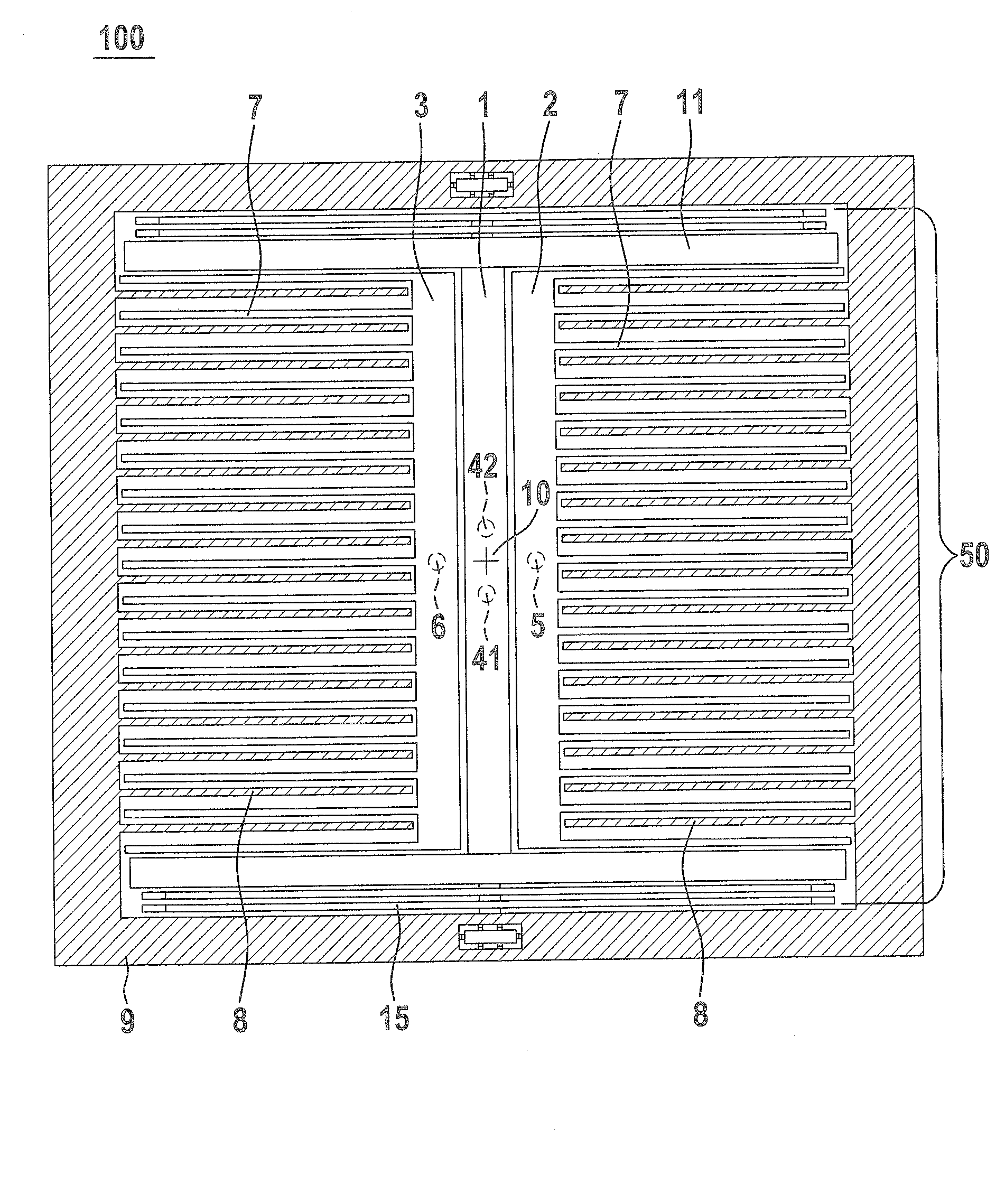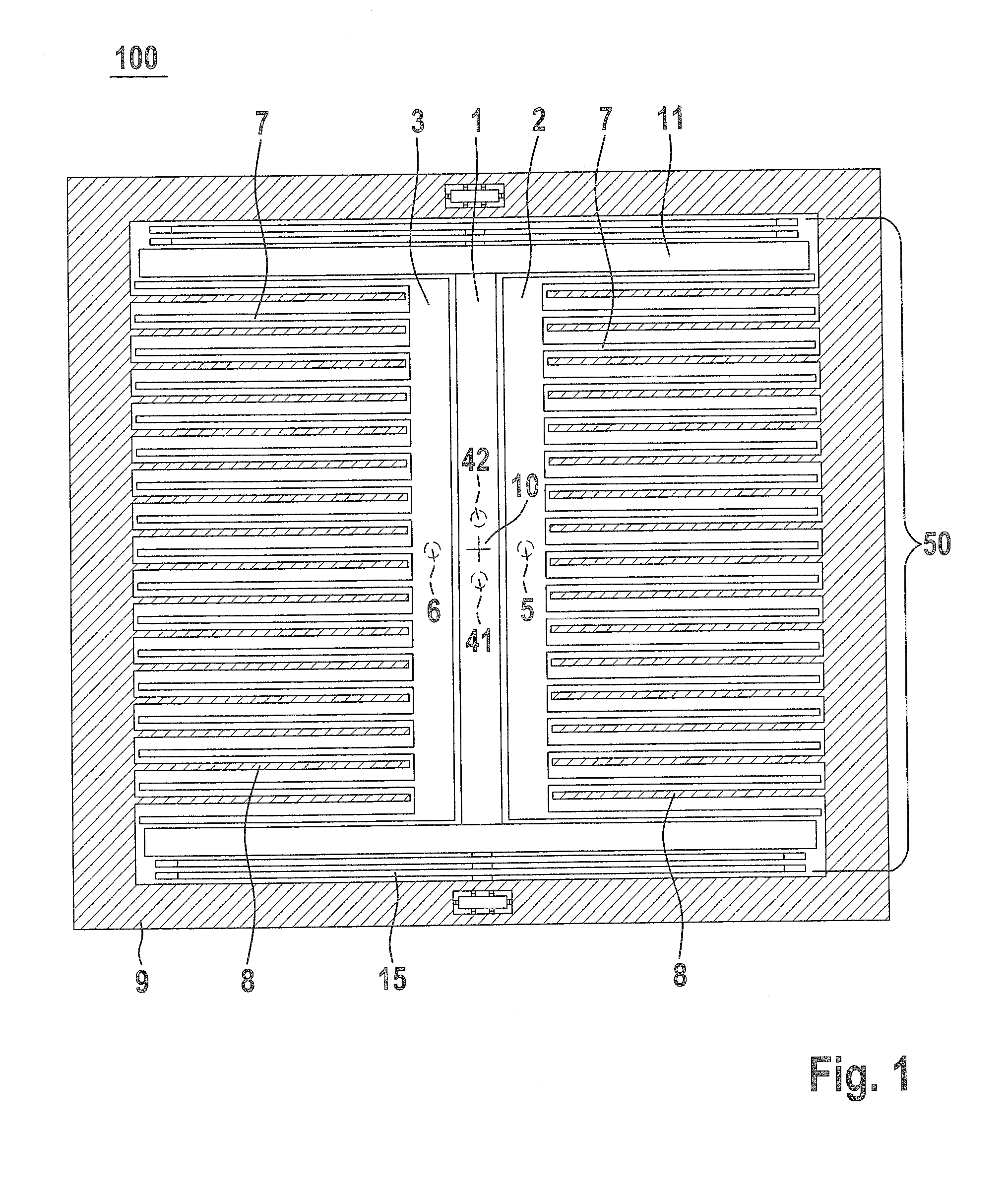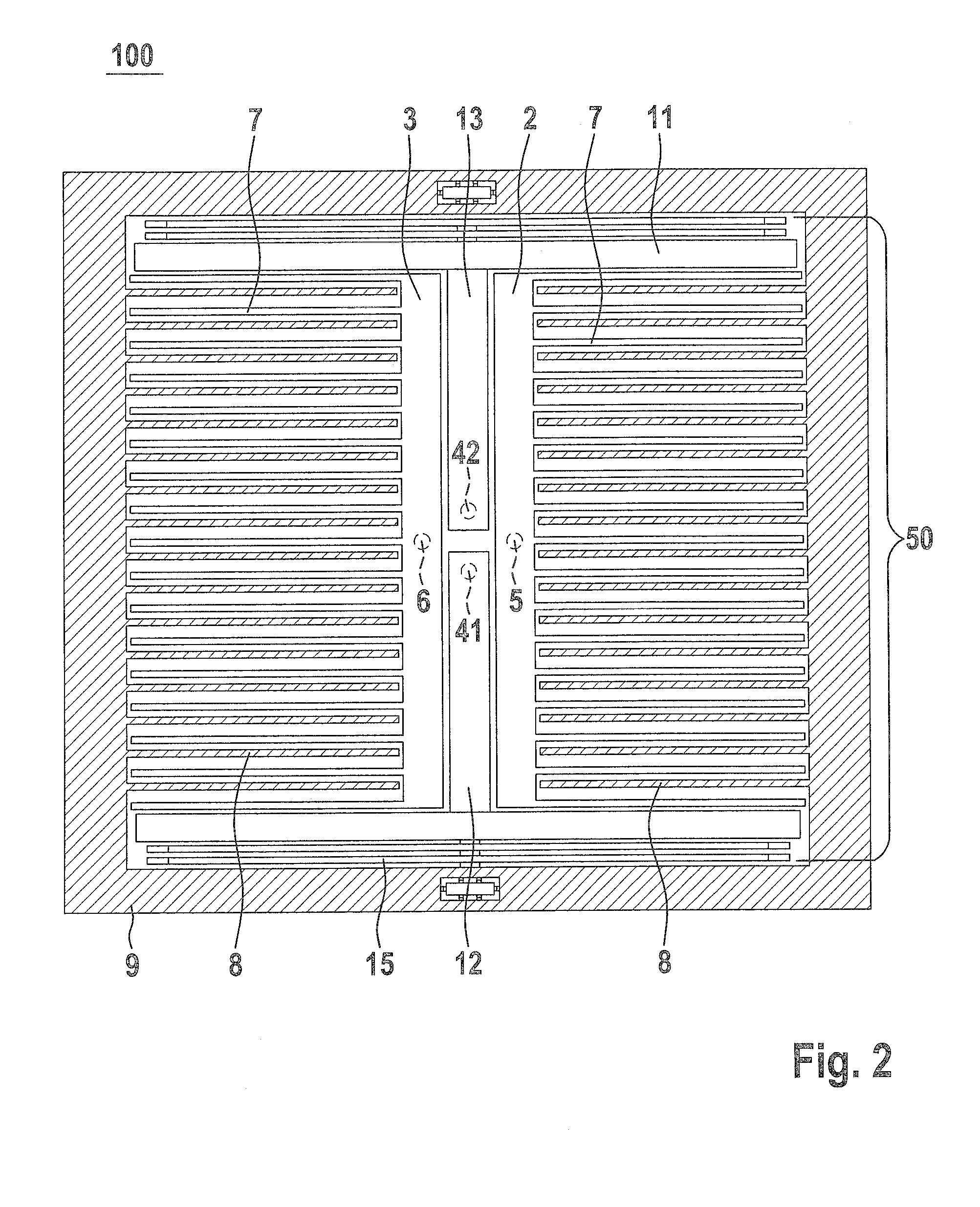Acceleration sensor having a surrounding seismic mass
a technology of acceleration sensor and surrounding seismic mass, which is applied in the direction of acceleration measurement using interia force, turn-sensitive devices, instruments, etc., can solve the problems of reducing affecting the accuracy of the measured capacitance, and causing mechanical stress in the substrate itself. , to achieve the effect of more recesses, strong against deformation, and stable against deformation
- Summary
- Abstract
- Description
- Claims
- Application Information
AI Technical Summary
Benefits of technology
Problems solved by technology
Method used
Image
Examples
Embodiment Construction
[0018]FIG. 1 shows an acceleration sensor as described in German patent application document DE 10 2007 047 592, which is not deemed to be a prior publication with respect to the present application. The acceleration sensor has a substrate 100, a seismic mass 9, a suspension 50 having two anchors 41 and 42 near the center, a suspension beam 1, and spring elements 15. Mass center of gravity 10 (also often referred to as the surface center of gravity or also the central axis) of seismic mass 9, or its projection in top view, runs through suspension beam 1. The two anchors 41 and 42 are not situated on mass center of gravity 10, but at a short distance adjacent thereto. They are situated under the suspension beam and are therefore illustrated by a dashed line. The two anchors 41 and 42 anchor suspension beam 1 on substrate 100. In the acceleration sensor illustrated, mass center of gravity 10 is located between anchors 41 and 42. Cross beams 11 and thereon, in turn, spring elements 15 ...
PUM
 Login to View More
Login to View More Abstract
Description
Claims
Application Information
 Login to View More
Login to View More - R&D
- Intellectual Property
- Life Sciences
- Materials
- Tech Scout
- Unparalleled Data Quality
- Higher Quality Content
- 60% Fewer Hallucinations
Browse by: Latest US Patents, China's latest patents, Technical Efficacy Thesaurus, Application Domain, Technology Topic, Popular Technical Reports.
© 2025 PatSnap. All rights reserved.Legal|Privacy policy|Modern Slavery Act Transparency Statement|Sitemap|About US| Contact US: help@patsnap.com



